Outpatient parenteral antimicrobial therapy guidelines from the IDSA

A panel of experts was convened by the Infectious Diseases Society of America (IDSA) to update the 2004 clinical practice guideline on outpatient parenteral antimicrobial therapy (OPAT)” Norris et al (2018). Abstract: A panel of experts was convened by the Infectious Diseases Society of America (IDSA) to update the 2004 clinical practice guideline on outpatient […]
Near-eye display to assist ultrasound guided central venous cannulation

Because head-mounted display can provide the visualized information without moving direction of eye- sight, ultrasound guided central venous cannulation might be performed more quickly and safer” Kasuya et al (2018). Abstract: BACKGROUND: Recently several types of head- mounted displays are available for use in the medical field. Because head-mounted display can provide the visualized information […]
Guidelines for the safe practice of total intravenous anaesthesia

Guidelines are presented for safe practice in the use of intravenous drug infusions for general anaesthesia. When maintenance of general anaesthesia is by intravenous infusion, this is referred to as total intravenous anaesthesia” Nimmo et al (2018). Abstract: Guidelines are presented for safe practice in the use of intravenous drug infusions for general anaesthesia. When […]
Single-needle peripheral vascular access in therapeutic plasma exchange
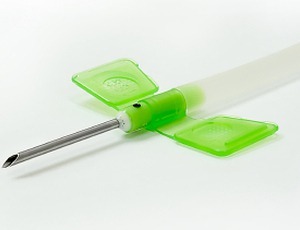
At our center, we prefer to use peripheral venous access to avoid central line-related complications, especially infection” Doggett et al (2018). Abstract: Apheresis treatments, which involve the removal of a component of blood, generally require one access and one return line to continuously draw and return blood into the extracorporeal circuit. At our center, we […]
What is the cost of unsuccessful short peripheral catheter placement?

Peripheral intravenous therapy is an established therapy with known complications and failures. The burden of the cost of unsuccessful short peripheral catheter (SPC) placement and maintenance is not always clearly identified” Jones (2018). Abstract: Peripheral intravenous therapy is an established therapy with known complications and failures. The burden of the cost of unsuccessful short peripheral […]
Implementation of smart pump technology with home infusion providers

While hospitals have adopted smart pump technology (SPT) featuring drug libraries and medication safety software, most home infusion providers (HIPs) continue to use traditional infusion pumps that don’t offer drug libraries or medication safety software” Brown et al (2018). Abstract: While hospitals have adopted smart pump technology (SPT) featuring drug libraries and medication safety software, […]
An example of how to improve peripheral vascular access outcomes

This study examined PIVC practice-related metrics before and after a comprehensive process improvement program, which included a change to closed catheter technology” Platt and Osenkarski (2018). Abstract: With most hospitalized patients requiring peripheral intravenous catheters (PIVCs), PIVC-related process improvement may substantially affect the health, safety, and satisfaction of patients and health care workers, in addition […]
Comparison of standard short peripheral catheters versus a power injectable version
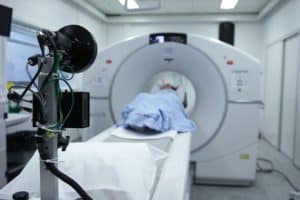
…compared the use and outcomes of standard SPCs (nonfenestrated) versus a power injectable SPC (fenestrated with 3 side holes distal to the catheter tip)” Pohlod (2018). Abstract: To perform high-resolution computed tomography and magnetic resonance imaging angiographies, contrast typically is rapidly injected through a 20-gauge or larger short peripheral catheter (SPC). Intravenous access in infants […]
Does the use of an infusion pump for red blood cells increase hemolysis?
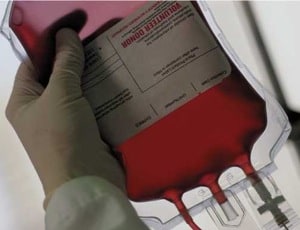
Transfusions of red blood cells (RBCs) are frequently administered for a variety of clinical conditions. The use of an infusion pump has become common practice in nursing” Centrella-Nigro et al (2018). Abstract: Transfusions of red blood cells (RBCs) are frequently administered for a variety of clinical conditions. The use of an infusion pump has become […]
Pinch-off syndrome associated with totally implantable venous access device

Pinch-off syndrome (POS) is a rare complication after totally implantable venous access device (TIVAD) implantation. In cancer patients, it is important to prevent this rare complication and to recognize it early if it does occur. We present a case series of POS after TIVAD implantation and the results of a literature search about this complication” […]
Is a discard phlebotomy tube necessary for P-Ionized calcium analysis?
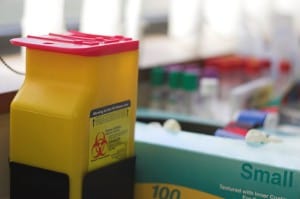
Our study has shown no significant difference between P-Ionized Calcium (pH adjusted = 7.4) values for the first and second tubes. Hence, the use of a discard tube is not required” Novakovic et al (2018). Abstract: BACKGROUND: Deviation in blood collection procedures is a central source of preanalytical variation affecting overall analytical and diagnostic precision. The procedure […]
Central catheter fibrin sheath infection treated with percutaneous vacuum assisted thrombectomy

We present the case of a patient with infection of a retained catheter-related fibrin sheath, a rarely described form of CRBSI, who was successfully treated with percutaneous vacuum-assisted thrombectomy” Choi et al (2018). Abstract: Central venous catheters (CVCs) have become commonplace in modern clinical practice. Despite their myriad benefits, they are associated with a host […]
Intraosseous access to administer 23.4% NaCl in the emergency setting

Intraosseous catheterization is an alternative route of venous access that may result in more rapid administration of 23.4% NaCl” Wang et al (2018). Abstract: BACKGROUND/OBJECTIVE: Prompt treatment of acute intracranial hypertension is vital to preserving neurological function and frequently includes administration of 23.4% NaCl. However, 23.4% NaCl administration requires central venous catheterization that can delay […]
Long-term study reviews infective vascular access outcomes associated with home parenteral nutrition

The aim of this study was to evaluate catheter-related complications of CVC in patients receiving HPN” Santacruz et al (2018). Abstract: OBJECTIVE: Home parenteral nutrition (HPN) has become a common therapy, with tunneled central venous catheters (CVCs) being the preferred route of administration. Peripherally inserted central catheters (PICCs) have been used increasingly, but whether they […]
Natural history of asymptomatic central venous catheter-related thrombosis

Asymptomatic central venous catheter (CVC)-related thrombosis in children varies in incidence from 5-69%” Jones et al (2018). Abstract: Asymptomatic central venous catheter (CVC)-related thrombosis in children varies in incidence from 5-69%. The rate of acute and long-term complications, such as Post Thrombotic Syndrome (PTS), from asymptomatic CVC-related thrombosis is unknown. This paper reports the outcomes […]
Functional review of precurved non-tunnelled catheters for haemodialysis
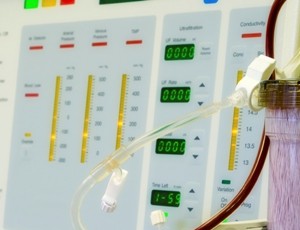
Our objective was to assess whether precurved non-tunnelled central venous catheters are comparable to tunnelled central venous catheters in terms of infection and catheter malfunction and to assess whether precurved non-tunnelled catheters are superior to straight catheters” van Oevelen et al (2018). Abstract: BACKGROUND: The main limitations of central venous catheters for haemodialysis access are […]
Ultrasound guidance for pediatric central venous catheterization
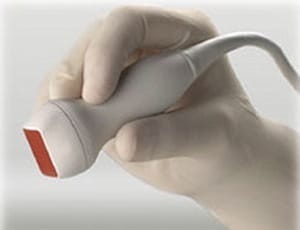
Ultrasound-guided techniques are associated with a reduced incidence of failures and inadvertent arterial punctures in pediatric central venous catheterization when compared with the anatomic landmark technique” de Souza et al (2018). Abstract: CONTEXT: Central venous catheterization is routinely required in patients who are critically ill, and it carries an associated morbidity. In pediatric patients, the […]
Mode of drug delivery in septic shock patients treated with vasopressors

50% of the ARISE cohort commenced VP within 4.4 h of ED presentation, and many did so prior to central venous access. Earlier initiation of VP was associated with greater crude and adjusted 90-day mortality” Udy et al (2018). Abstract: INTRODUCTION: To describe the utilization of vasopressors (VP) in patients enrolled in the Australasian Resuscitation In […]
Hemodialysis using the Cardio-Renal Pediatric Dialysis Emergency Machine
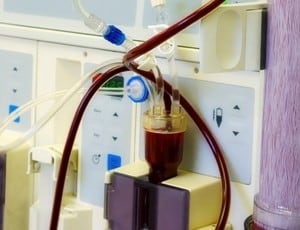
We report the first worldwide experience with continuous veno-venous hemodialysis (CVVHD) in children using the last generation Cardio-Renal Pediatric Dialysis Emergency Machine (CARPEDIEM)TM device” Vidal et al (2018). Abstract: We report the first worldwide experience with continuous veno-venous hemodialysis (CVVHD) in children using the last generation Cardio-Renal Pediatric Dialysis Emergency Machine (CARPEDIEM)TM device. Thirteen children […]
Review of variation in infection prevention practices for PICC care

To evaluate evidence supporting infection prevention practices for CVCs recommended in national guidelines and to compare with reported practices for peripherally inserted central catheters (PICC), a type of CVC widely used in NNUs” Fraser et al (2018). Abstract: BACKGROUND: There is uncertainty about the variation in infection prevention practices for central venous catheters (CVC) in […]
Psychological interventions to combat needle-related procedural pain

This is the second update of a Cochrane Review (Issue 4, 2006). Pain and distress from needle-related procedures are common during childhood and can be reduced through use of psychological interventions (cognitive or behavioral strategies, or both)” Birnie et al (2018). Abstract: BACKGROUND: This is the second update of a Cochrane Review (Issue 4, 2006). […]
Clinical outcomes of tunneled central jugular and femoral central venous catheters

The literature on the outcomes of tunneled femoral catheters compared to that of jugular catheters is scarce and derived mainly from small cohorts” Guillermo-Corpus et al (2018). Abstract: BACKGROUND: The literature on the outcomes of tunneled femoral catheters compared to that of jugular catheters is scarce and derived mainly from small cohorts. MATERIAL AND METHODS: […]
What is the optimal blood draw volume for children in clinical trials?
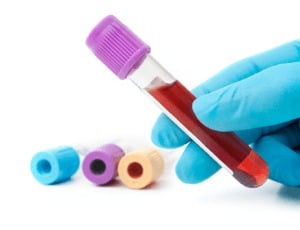
The aim of the study was to assess the safety of blood draws in children aged six months to 12 years targeting volumes of 3% of total blood volume” Peplow et al (2018). Abstract: AIM: Recommendations for maximum blood draw in children range from 1 to 5% despite limited evidence. The aim of the study […]
Thrombosis risk of vascular access devices among critically ill medical patients

The relative risk of VTE between these catheter types is not well defined. We report the rate of VTE in intensive care unit (ICU) medical patients receiving PICC, CVC, both, or neither” White et al (2018). Abstract: BACKGROUND: Central venous catheters (CVC) and peripherally inserted central catheters (PICCs) are central vascular access devices (CVADs) that […]
Catheter-related staphylococcus aureus bacteremia and septic thrombosis

We retrospectively studied the clinical characteristics of patients with Staphylococcus aureus catheter-related septic thrombosis and the outcomes related to different management strategies” wilson Dib et al (2018). Abstract: BACKGROUND: Catheter-related septic thrombosis is suspected in patients with persistent central line-associated bloodstream infection (CLABSI) after 72 hours of appropriate antimicrobial therapy. The clinical diagnosis and management […]
Integrated dressing to secure peripheral intravenous catheters
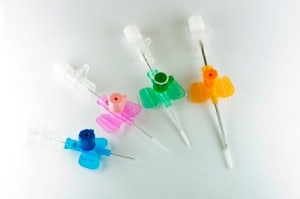
The reported incidence of peripheral intravenous catheter (PIV) failure has been as high as 69%. This is in part due to inadequate stabilisation or securement to the skin, which allows micro-motion of the catheter within the vein” Marsh et al (2018). Abstract: BACKGROUND: The reported incidence of peripheral intravenous catheter (PIV) failure has been as […]
Central venous catheter tip location confirmed with agitated saline bubble-enhanced ultrasound

Dynamic ultrasound-based visualization of microbubbles in the right atrium is a highly accurate method to detect percutaneous implantation of large-lumen, tunneled, central venous catheters without the need for fluoroscopic guidance technology” Passos et al (2018). Abstract: BACKGROUND: In patients with end-stage renal disease, the use of cuffed, tunneled dialysis catheters for hemodialysis has become integral […]
Eliminating or reducing needle pain in children using lean methodology

Over 200,000 patients experience needle pain annually in our institution, caused by blood draws, intravenous access, vaccinations, and injections on all inpatient units, emergency departments, outpatient laboratories, and ambulatory clinics” Friedrichsdorf et al (2018). Abstract: INTRODUCTION: Pain remains common, underrecognized, and undertreated in children’s hospitals and pediatric clinics. Over 200,000 patients experience needle pain annually […]
Who are the best peripheral intravenous catheter inserters?
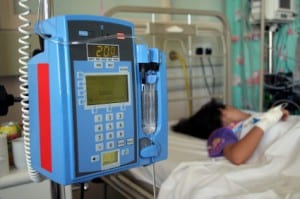
Peripheral intravenous catheters (PVCs) are essential invasive devices, with 2 billion PVCs sold each year. The comparative efficacy of expert versus generalist inserter models for successful PVC insertion and subsequent reliable vascular access is unknown” Marsh et al (2018). Abstract: BACKGROUND: Peripheral intravenous catheters (PVCs) are essential invasive devices, with 2 billion PVCs sold each […]
Blood sampling guidelines with focus on patient safety and identification
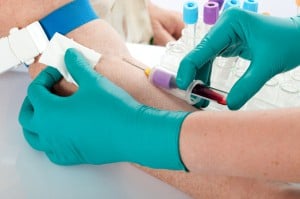
We recommend that patient identification must be done using open questions and ideally three separate pieces of information. Labelling of the tube or linking the identity of the patient to the tube label electronically must be done in the presence of the patient whether it is before or after sampling” Cornes et al (2018). Abstract: […]

